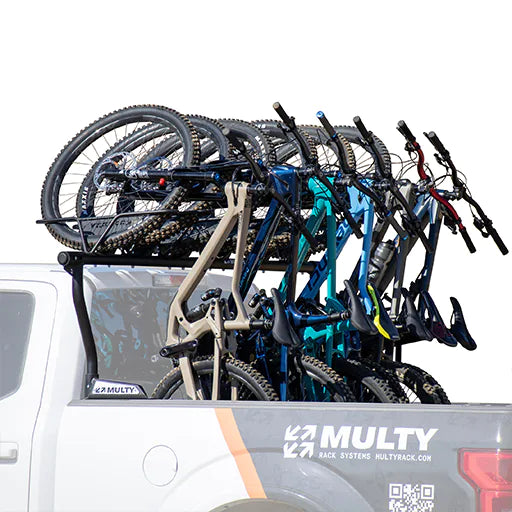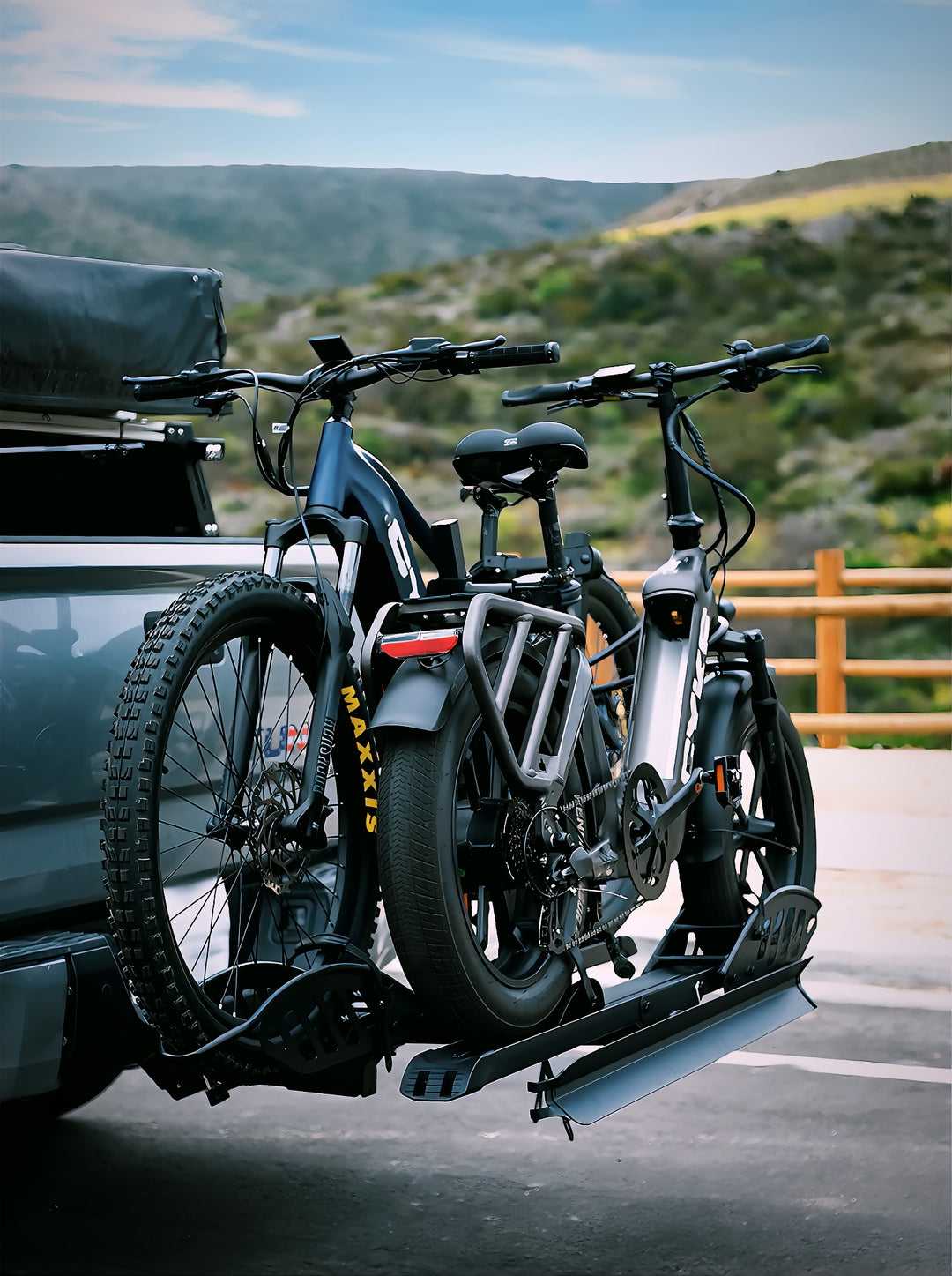Discover the Various Sorts Of Bike Rack and Their Practical Applications for Biking Lovers
The variety of bike Racks readily available today accommodates the diverse requirements of cycling enthusiasts. From freestanding to wall-mounted options, each layout provides distinct benefits for storage space and transport. Portable Racks additionally supply flexibility for those on the step. Selecting the suitable kind calls for cautious consideration of certain needs. Comprehending these factors can make a significant difference in both ease and safety and security for cyclists. What are the vital considerations when choosing a bike rack?
Understanding Bike Rack Keys In
Different sorts of bike Racks deal with the diverse requirements of bicyclists. Amongst the most common are freestanding shelfs, commonly located in urban areas, which allow several bikes to be safeguarded in a small space. Wall-mounted Racks serve those with restricted flooring area, providing an efficient service for home storage. In addition, portable bike racks, designed for convenience of transport, interest bikers that often travel.

Hitch-Mounted Bike Racks
Hitch-mounted bike Racks provide a functional remedy for moving bikes, but comprehending their setup process is crucial for reliable usage. Users need to additionally take into consideration the weight capability of these Racks to ensure safety and security while traveling. Furthermore, compatibility with various car types plays a significant role in determining the appropriate rack for specific needs.
Setup Process Summary
When selecting a hitch-mounted bike rack, recognizing the setup process is vital for assuring safety and security and benefit. The customer must validate compatibility in between the lorry and the shelf's drawback receiver. Many Racks are made for either 2-inch or 1.25-inch receivers. After choosing the proper shelf, the setup starts with securing the shelf into the hitch receiver and tightening up the drawback pin or screw to stop movement. Appropriate placement is vital to ascertain the rack does not block tail lights or certificate plates. As soon as mounted, it is recommended to inspect for security by applying small stress to the shelf. Complying with the manufacturer's instructions will guarantee an effective installment, advertising a risk-free cycling experience when driving.
Weight Capacity Considerations

Compatibility With Automobile Types
Choosing the appropriate bike shelf involves confirming compatibility with various vehicle types. Hitch-mounted bike Racks are created to affix to the back hitch receiver of a vehicle, making them appropriate for a wide variety of suvs, vehicles, and cars. Nevertheless, it is important to inspect the drawback class and weight ability to verify a correct fit. A lot of hitch-mounted Racks work with 1.25-inch and 2-inch receivers, fitting automobiles geared up with proper pulling abilities. Additionally, users need to consider their automobile's elevation and style, as some Racks may obstruct rear access or need added clearance. Eventually, understanding automobile specifications confirms that cycling lovers can safely transport their bikes without endangering safety or functionality.
Trunk-Mounted Bike Racks
Trunk-mounted bike Racks supply a sensible service for bicyclists seeking a reliable way to transfer their bikes. Comprehending the installment process is crucial for perfect use, as improper arrangement can bring about safety problems. Additionally, considering the weight capability of these Racks assurances that they can securely hold the bikes without threat of damage or failing during transportation.
Installment Process Review
Several biking fanatics value the benefit of trunk-mounted bike Racks for their ease of use and convenience. The installation process typically starts with acquainting and unpacking the shelf oneself with its parts. Most Racks feature adjustable straps and hooks made to protect them to the vehicle's trunk or hatch. Individuals ought to confirm the rack is positioned properly, straightening it with the automobile's contours for security. Following the supplier's directions, the straps are after that tightened up firmly, assuring a tight fit. It's vital to inspect that the rack does not obstruct the automobile's lights or permit plate. Verifying that all links are safe and secure prior to filling bikes is vital for secure transportation. Correct setup boosts both safety and performance during cycling journeys.
Weight Capacity Considerations
When considering a bike rack for transferring bikes, weight capability is an important aspect that can not be neglected. Trunk-mounted bike Racks usually have weight limits that differ depending on the design and design. It is essential for customers to inspect these specifications to guarantee they do not surpass the suggested weight, as doing so can jeopardize both safety and lorry honesty. Most trunk-mounted Racks can support 1 or 2 bikes, with a mixed weight capability varying from 70 to 120 extra pounds. Cyclists ought to additionally consider the weight of their bikes, particularly if they possess larger models like electric bikes. Properly matching the rack's weight capacity with the bikes' weights guarantees a secure and secure transportation experience.
Roof-Mounted Bike Racks
Roof-mounted bike Racks provide a streamlined service for transporting bicycles, supplying cyclists with the benefit of taking full advantage of cargo room. These Racks are developed to hold bikes securely atop the automobile, permitting easy accessibility to the rear of the automobile and preventing obstructions to the permit plate or tail lights. They are suitable for people who regularly take a trip with their bikes, as they can suit different bicycle designs and sizes.
Installment typically includes connecting the rack to the car's crossbars, guaranteeing a stable and secure fit. Roof-mounted Racks are lightweight and frequently aerodynamic, which can cause enhanced gas efficiency contrasted to other kinds of shelfs. Individuals should think about the elevation of their car when filling and unloading bikes, as well as prospective challenges when entering garages or low-clearance locations - Hitch Bike Rack. In general, roof-mounted bike E Bike Rack Racks offer a effective and flexible alternative for enthusiastic bicyclists on the move
Wall-Mounted Bike Racks
Wall-mounted bike Racks provide a reliable service for bicyclists looking for to make best use of limited room while securely storing their bikes. These Racks are perfect for city residents or those with small garages, as they boost bikes off the ground and use upright area. Made from durable materials, wall-mounted choices can suit different bike kinds, including road, crossbreed, and mountain bicycles.
Installation is simple, making it possible for customers to place them in garages, cellars, and even outside spaces. Numerous styles permit one or numerous bikes, making them flexible for individual or household usage. Additionally, some wall-mounted Racks included integrated locks or protection functions to hinder theft, enhancing satisfaction for cyclists.
Mobile Bike Racks
Portable bike Racks use cyclists a versatile and hassle-free solution for carrying their bikes. These Racks are made for very easy installation and removal, making them ideal for those that need to often switch in between vehicles or places. Compact and typically light-weight, mobile bike Racks can be conveniently kept in a trunk or garage, reducing the worry of permanent setups.
There are numerous kinds of mobile bike shelfs, including hitch-mounted, trunk-mounted, and roof-mounted options, each satisfying different car types and cyclist choices. Hitch-mounted Racks offer stability and accessibility, while trunk-mounted Racks are often more budget-friendly and versatile. Roof-mounted Racks are excellent for taking full advantage of freight room but may call for some training.
Selecting the Right Bike Shelf for Your Requirements
How can one identify the most effective bike shelf to fit their particular biking requirements? Recognizing the best bike rack entails reviewing numerous aspects. One need to consider the kind of automobile utilized for transportation, as Racks are created for various installing systems, such as roofing system, trunk, or drawback. Next off, the number of bikes to be carried is vital; some Racks accommodate just one, while others can hold multiple bikes effectively. Additionally, identifying the weight and frame style of the bikes is significant, as particular Racks are better matched for much heavier or distinctly designed bikes. Lastly, designated usage must be considered; constant travelers may like a much more portable choice, while occasional individuals may focus on simplicity and ease of setup. By very carefully weighing these factors to consider, people can choose a bike rack that satisfies their needs and enhances their biking experience.

Regularly Asked Concerns
Can Bike Racks Accommodate Different Bike Sizes and Styles?
Bike Racks vary in layout, making it possible for accommodation for various bike sizes and designs. Some Racks feature flexible elements, while others are especially customized for sure bikes, making sure secure storage and simple availability regardless of the bike's specifications.
Just how Do I Properly Secure My Bike on a Shelf?
To appropriately secure a bike on a rack, one need to assure the framework and wheels are securely secured using bands or locks, looking for security and avoiding motion during transportation to avoid damages.
Are Bike Racks Easy to Mount and Remove?
Bike Racks vary in installment intricacy, yet several are developed for user-friendliness. Removable versions usually use straightforward configuration and removal, while permanent setups may call for tools and more time, depending upon the certain design.

What Materials Are Bike Racks Usually Made From?
Bike Racks are commonly made from products such as light weight aluminum, steel, and plastic. Hitch Bike Rack. Steel offers sturdiness and strength, while aluminum provides light-weight transportability. Plastic options are commonly created for ease of usage and price
Do Bike Racks Affect Fuel Performance When Driving?
The inquiry of whether bike Racks impact fuel efficiency when driving is substantial. Studies show that bike Racks can enhance wind resistant drag, possibly leading to lowered gas performance, specifically at higher rates or with additional weight.
After picking the ideal shelf, the installation begins with protecting the shelf into the hitch receiver and tightening up the hitch pin or screw to prevent motion. Roof-mounted Racks are lightweight and often aerodynamic, which can lead to boosted fuel efficiency compared to other kinds of racks. Hitch-mounted Racks provide security and availability, while trunk-mounted Racks are frequently much more economical and flexible. Next, the number of bikes to be lugged is essential; some Racks suit only one, while others can hold multiple bikes successfully. Bike Racks vary in design, making it possible for holiday accommodation for various bike dimensions and designs.